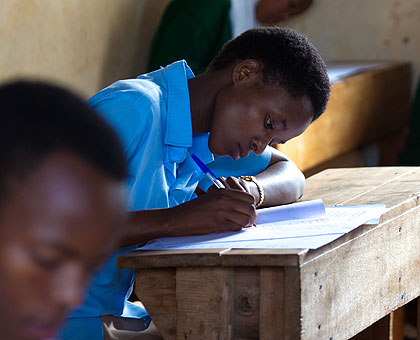Despite the gradual improvement of literacy levels in the country, legislators have said the current figures that show that 68 per cent of the population aged 15 and above can read and write is not enough vis-a-vis the aspirations of the nation.


Despite the gradual improvement of literacy levels in the country, legislators have said the current figures that show that 68 per cent of the population aged 15 and above can read and write is not enough vis-a-vis the aspirations of the nation.
The report of the Fourth Population and Housing Census conducted in 2012 by the National Institute of Statistics of Rwanda (NISR), released Tuesday, indicates that 32 per cent of the population aged 15 and above is unable to read and write a simple text in any of the three national languages; Kinyarwanda, English and French.
MP Agnès Mukazibera, the chairperson of the standing Committee on Education, Technology, Culture and Youth, told The New Times yesterday that the country’s literacy set-up, even though reflecting a gradual improvement given the situation in the past three decades, is wanting and must be further improved.
"The Constitution [in Article 40] emphasises education for all and, all of us, including Parliament and other arms of government, must continue to put in more effort to improve on the literacy situation. We must all cooperate on this so that the 32 per cent of population also come on board,” MP Mukazibera said.
The report also indicates that about 49 per cent of the population aged 15 and above is literate in Kinyarwanda only, with 7 per cent literate in both Kinyarwanda and English, while about 7 per cent is literate in Kinyarwanda, English and French.
"A high literacy rate suggests the existence of an effective primary education system or literacy programmes that have enabled a large proportion of the population to acquire the ability to use the written word,” the report says.
But the reverse, officials say, is a setback to prosperity as several development programmes initiated by government cannot take off when illiteracy is higher.
"Can you imagine how hard it is managing a population that is illiterate? Illiterate people find it hard to understand or pertake beneficial projects such as Mutuelles de Sante (community health insurance scheme), manage their own business projects, and other development issues,” said Dr Alvera Mukabaramba, the Minister of State in charge of Community Development and Social Affairs.
"Literacy is a basis for development in general. Illiterate people won’t grasp the basics about the importance of hygiene and health, but with the augmenting government initiatives such as 12-Year Basic Education and adult literacy, the number of Rwandans who can’t read will significantly reduce.”
MPs for assessment
Mukazibera’s committee plans to travel to a select areas of the country to examine education and literacy.
Once on the ground, MPs will assess what the report has highlighted as well as the progress rolled out by relevant government education initiatives.
Apart from the Nine-Year Basic Education, and the current 12-Year Basic Education programme, another potential driver of the country’s literacy rate is adult literacy programme that won a global award in 2012.
Formerly under the Ministry of Local Government, the programme was moved to the Ministry of Education about three years ago.
The report indicates that literacy levels are higher in urban areas (about 82 per cent) than in rural areas (about 65 per cent), and that literacy among males (about 73 per cent) is higher than among females (about 65 per cent) but the differences are not substantial.
Countrywide, a total of 3.42 million people were, at the time of the 2012 census, attending school. The lowest literacy rate (about 58 per cent) was observed in Nyaruguru District, Southern Province.


